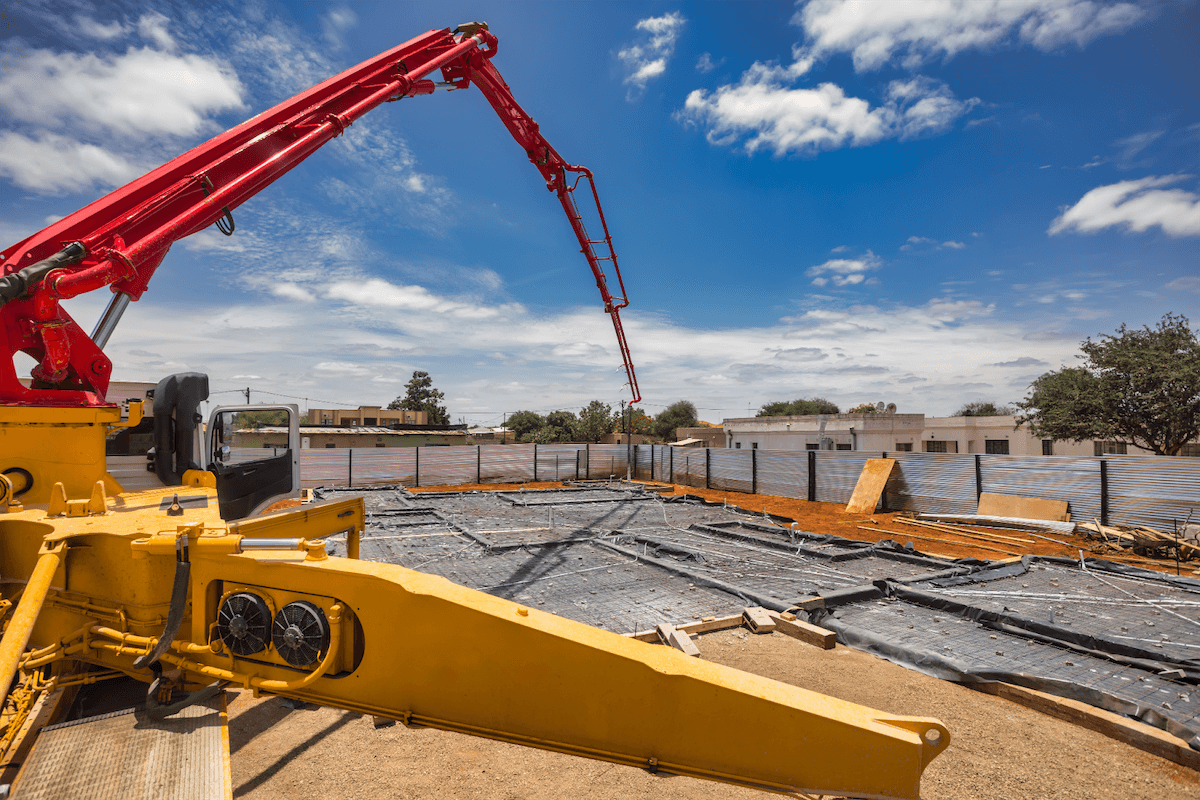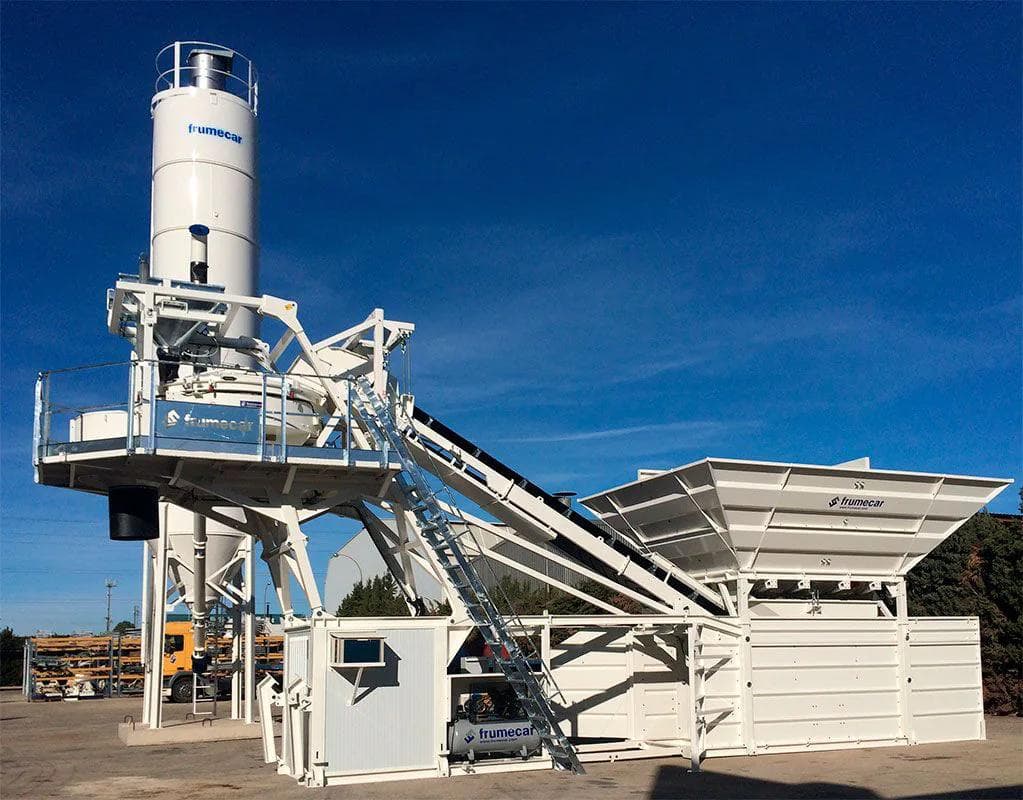Concrete batch plant ROI: A complete breakdown for your business

Introduction
In today’s construction industry, managing costs while maintaining efficiency is key to staying competitive. Owning a concrete batch plant can offer construction companies considerable long-term savings, control over quality, and improved project timelines. This guide explores the return on investment (ROI) of owning a concrete batch plant, helping companies evaluate if it’s a smart move for their business.
Shop Batch Plants for Sale at Machinery Partner
Understanding ROI for a Concrete Batch Plant
The ROI of a concrete batch plant is determined by comparing the setup and operational costs with potential savings and productivity gains. For high-volume projects, producing your own concrete often leads to significant long-term savings. Accurately assessing ROI requires examining initial capital investment, ongoing operational expenses, and revenue opportunities from optimized production.

Initial Capital Investment
Setting up a concrete batch plant involves several upfront costs. Companies must budget for land acquisition or leasing, permits, and plant equipment. These initial costs may range from tens of thousands to several hundred thousand dollars, depending on location, plant size, and equipment quality. However, this investment enables companies to produce concrete independently, reducing reliance on third-party suppliers and creating cost efficiencies.

Key Initial Expenses:
- Equipment Costs: Investing in quality batch plant equipment like mixers, silos, and conveyors is essential. For instance, a model like the Frumecar EBA 1000—ideal for medium-to-large projects—can cost between $100,000 and over $1 million, depending on specifications.
- Land and Permits: Location affects land and permitting costs. While in some areas these may be minimal, in high-demand areas, they can be substantial.
Not sure which concrete batch plant is right for your business? Take the quiz now to find out.
Ongoing Operational Costs
Beyond the initial investment, running a concrete batch plant involves recurring costs. Labor, raw materials (cement, aggregates, water), and maintenance are essential expenses to factor in. Proper budgeting for these costs is vital for a positive ROI and sustainable operations.
Detailed Operational Costs:
- Labor: Skilled operators are necessary for efficient plant operation. Labor expenses can be optimized by hiring trained personnel who ensure smooth and effective production.
- Material Costs: Cement, aggregates, and water are the main materials required for concrete. Each material’s cost directly impacts production expenses, making it important to secure reliable, cost-effective suppliers.
- Energy and Maintenance: Operational efficiency requires power and routine maintenance to prevent costly downtimes. Regular inspections and keeping essential spare parts on hand can reduce repair costs and extend equipment life.

Find Frumecar Concrete Batch Plants for sale at Machinery Partner.
Installation and Setup Costs
Initial installation and setup costs vary based on site preparation needs and local infrastructure. For instance, connecting utilities and ensuring proper drainage can add to installation expenses. Additionally, companies must factor in time and labor spent on setting up the plant, which can affect ROI.
Comparing Costs: Batch Plant vs. Ready-Mix Concrete
Producing concrete on-site is generally more cost-effective than purchasing ready-mix. For instance, manufacturing 17,000 cubic yards with an owned batch plant can save approximately $825,180 compared to buying ready-mix at $130 per cubic yard.

Here’s the full breakdown:
Return On Investment Example Frumecar EBA 1000 Concrete Plant (17,000 cubic yards)
| Time to complete 17,000 yd³ of concrete | |
|---|---|
| Yield per batch | 1.3 yd³ |
| Batches per hour [conservative estimate] | 40 batches |
| Cubic yards produced per hour | 52 yd³ |
| Total project volume | 17,000 yd³ |
| Hours to complete project | 326.02 hours |
| Estimated cost per yd³ of concrete | |
|---|---|
| Cement | $19.19 |
| Aggregates | $13.50 |
| Water | $3.04 |
| Additives | $18.80 |
| Operator cost [Assumed $50k for high estimate] | $2.94 |
| Electricity cost [Assumed high estimate 120 kWh @ $0.17 per kW] | $0.51 |
| Cost of machine spread over material volume | $22.89 |
| Maintenance [Worst case parts and servicing] | $0.59 |
| Total cost per yd³ | $81.46 |
| Cost to produce vs purchasing ready mix @ 17,000 yd³ | |
|---|---|
| Cost of 17,000 yd³ of ready mix @ $130 yd³ | $2,210,000 |
| Cost to produce 17,000 yd³ of concrete with Frumecar EBA 1000 | $1,384,820 |
| Potentional savings | $825,180 |
Break-Even Analysis
Breakeven Point: For example, with the Frumecar EBA 1000, profitability begins after producing around 6,000 cubic yards, making each additional yard produced increasingly cost-effective.
Key Factors Influencing Batch Plant ROI
Several factors determine the potential ROI of a batch plant, from production capacity to location and project scale.
- Production Capacity
Higher production capacities allow for quicker breakeven and more profit per cubic yard produced. For large-scale projects, owning a batch plant can speed up project timelines and increase savings. - Project Size and Location
Large projects, especially those far from ready-mix suppliers, benefit most from an on-site batch plant by eliminating transportation costs and delivery delays. - Customization and Flexibility
Owning a batch plant offers flexibility to create custom concrete mixes for specialized projects, ensuring control over quality and cost.
Conclusion
Investing in a concrete batch plant can lead to significant savings, increased efficiency, and enhanced project quality. For high-volume or long-term projects, the ROI can be substantial, especially when location and project demands make on-site concrete production advantageous. Shop for concrete batch plants at Machinery Partner. For guidance on integrating a batch plant into your business, contact Machinery Partner at 888-297-0623. We offer tailored solutions to maximize your investment and support your company's growth.






